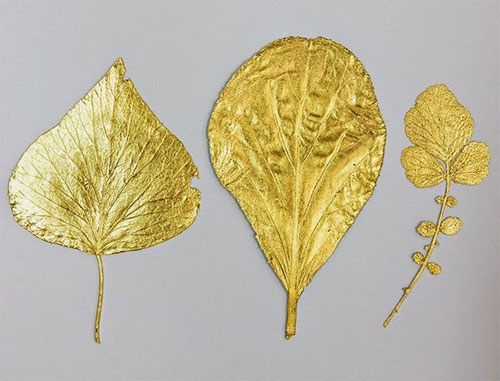LIONEL ESTEVE – PERROTIN
76 rue de Turenne, 75003 Paris
18 april - 30 may 2015
https://www.perrotin.com/
The day we met, Lionel Estève was setting up a “Retrospective” in Brussels of his own invitation cards. In his case, we could say that an exhibition starts with the invitation card: the name, the dates, the place and then a title: “a wander.” There is also an image on the back, and the artist adopts a unique position : it is not about a work, a detail, but a photograph that he has taken and that he uses to poetically introduce the exhibition. Here, a bit of landscape, a tree, a hillside descending to the banks of a river and its reflection in the water. It is bucolic, and yet quickly we discover that the reflection doesn’t match the image and that, mysteriously, it shows even more than reality; it is an image spontaneously taken by the artist during one of his walks around the Imperial Park of Tokyo. This is the grand theme of the solitary wanderer, of his contact with Nature, which we can say is omnipresent in the work of Lionel Estève; I see here a common thread in his singular and unique body of work.
« Brilliant flowers, diverse colors of the meadows, fresh shady spots, brooks, thickets, greenery, come purify my imagination sullied by all those hideous objects. »
Galerie Perrotin, Paris will first present two large landscapes on glass. In dried and gilded poppies, one cannot miss the bell shape so present in his work. An invisible feather is swirling. Then six paintings in a new and unique medium: the artist collected various types of plants, dried and pressed, bleached with ink and painted with watercolors following their organic structures. In another room, a frieze of dried and stiffened plants, also gilded with gold leaf, at the base of the walls. Above the frieze: several large-format watercolors, crystals constellations in the shape of geometric prisms, creating multiple variations of colors. In the last room: a herbarium of dried and gilded plants, some very large, arranged on the wall, a little like Matisse and his cut-outs: « but I believe this will be impressive, like a jungle or a blazing summer. » This is his first exhibition where the vegetal world is so present in the work. It is an occasion to demonstrate how, with each exhibition,
the artist renews his body of work. Is this the same Lionel Estève whose exhibition we saw on rue de Turenne in 2005, and three years ago in Impasse Saint Claude? This is an artist who constantly experiments in his studio, and today the subject is gigantic dried leaves and the technique of gold-leafing, Rather than lecturing on the appearance of gold in the chromatic and material universe of the artist, we simply recall that when the solution on which the gold leaf is applied is ready, it is described as “amoureuse” (in love). In all of these techniques there is a souvenir of craftsmanship, of handiwork, of moments spent with children. From these simple gestures, Lionel Estève succeeds in producing singular works. Often, at first, it is as if there is a play, a reinterpretation of the gesture: a felt-tip pen is used to “mark,” watercolor is dropped in a puddle of water, the color is dissipated… the works are of the lightest sort. Paul Klee insisted on “only saying things once, and the
simplest way possible.”
« My latest film comes out on December 30th. There is nothing to understand. To take from, yes… but to understand, that’s quite a big word. When I hear a Madonna album, I don’t understand the words, but that doesn’t mean that I don’t understand the album. »
One would like to say that this unique and singular work corresponds to unique and singular methods. How does Lionel Estève work? It generally begins with this special relationship with Nature, in the Drôme, or in Tuscany. As he says, « nature tells us something. » In this exhibition, Nature speaks, and what she says is mysterious. It is not about an ecological or melancholic relationship, but a very contemporary and constructive one, a new way of thinking of drawing and sculpture… The relationship with Nature is personal and, of necessity, complex; it is not given, it is learned, and earned. Certainly, there are images of freedom, of leisure, of space…. but there is also the revelation of losing oneself in the universe, or what Rousseau called « those delights, those moments of rapture, those ecstasies. » From these are born the observations and experimentations that will inspire the projects, to be followed by moments of improvisation
